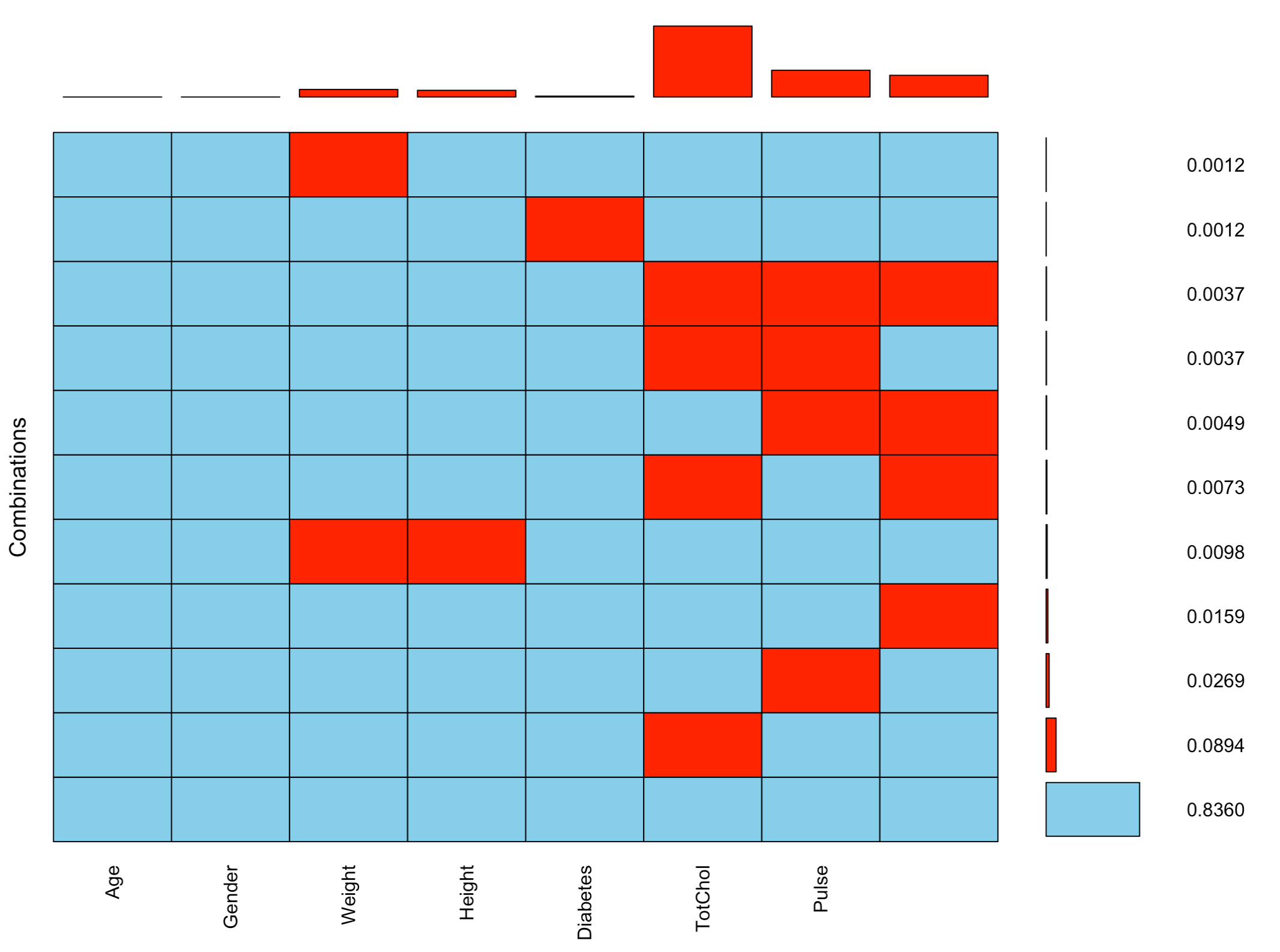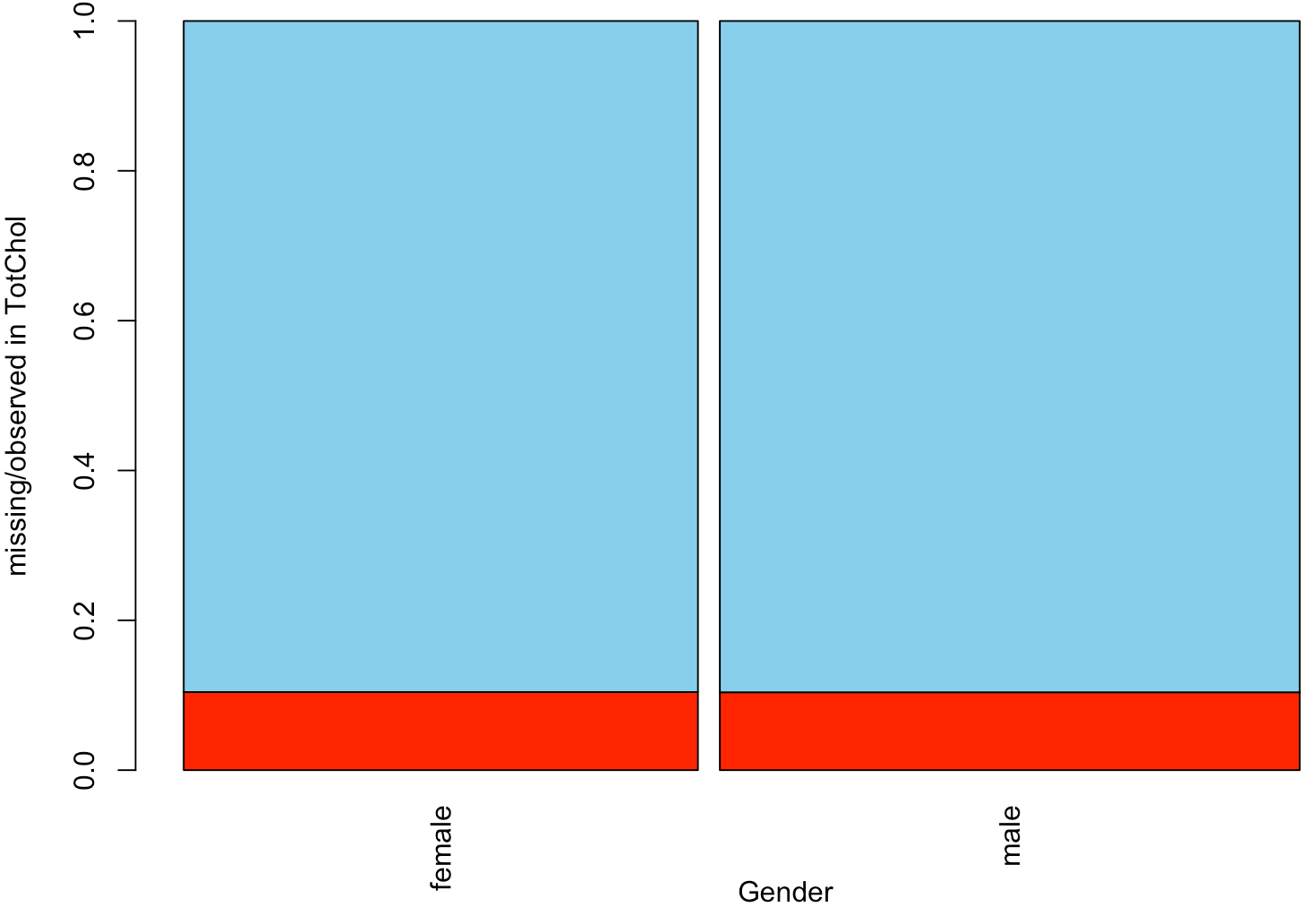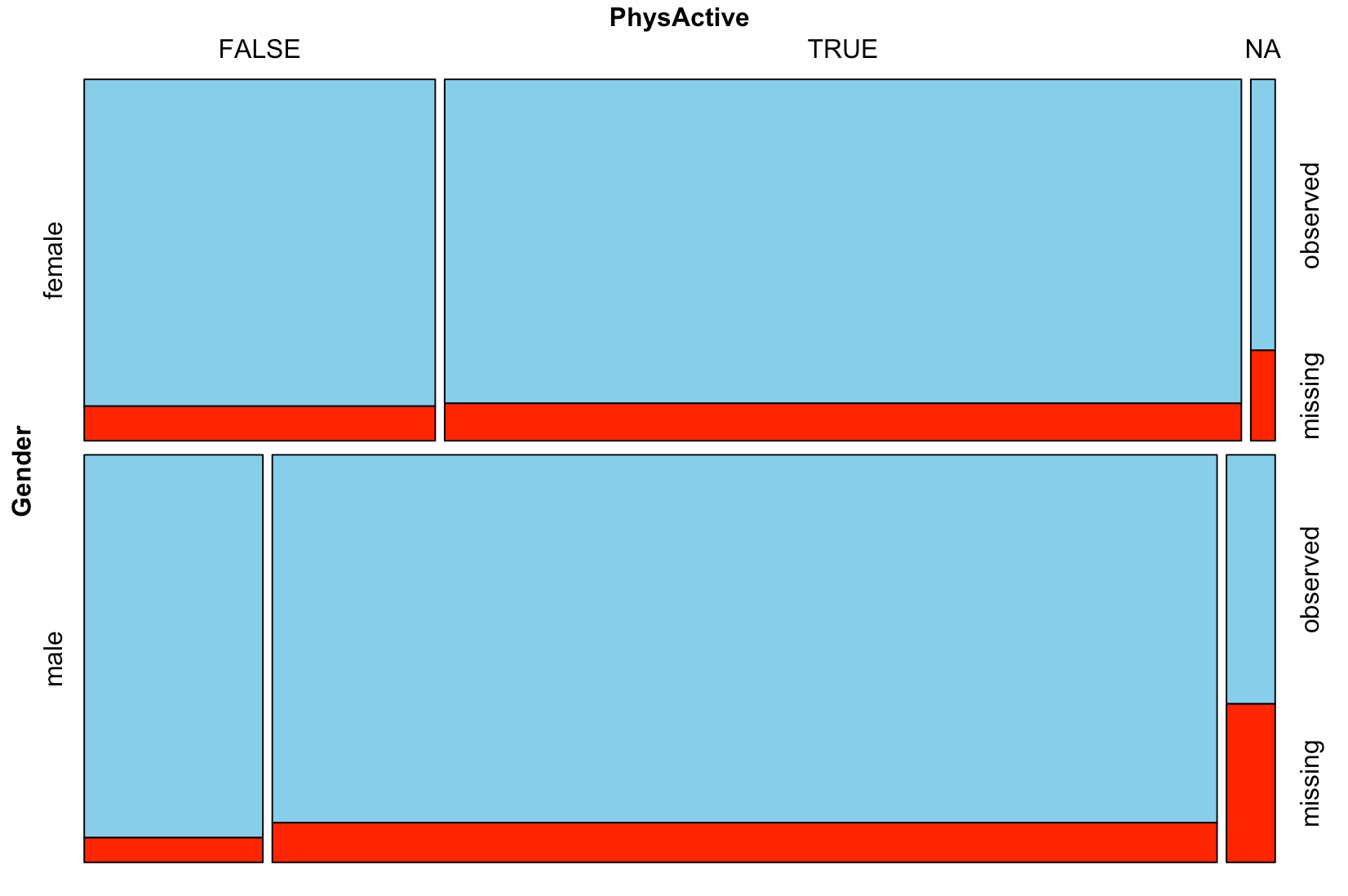Visualizing missing data patterns
Handling Missing Data with Imputations in R

Michal Oleszak
Machine Learning Engineer
Problems with the testing approach
- Detecting missing data patterns with statistical tests can be cumbersome.
- t-test comes with many assumptions about the data.
- Inferences based on p-values are prone to problems (choosing significance levels, p-hacking).
Visualizing missing data
- Another approach: visualizations!
- Easy to use.
- Ability to detect missing data patterns.
- Provide insights into other aspects of data quality.
The VIM package has a great set of tools for plotting missing data. In this lesson:
- Aggregation plot
- Spine plot
- Mosaic plot
Aggregation plot
nhanes %>% aggr(combined = TRUE, numbers = TRUE)

Spine plot
nhanes %>% select(Gender, TotChol) %>% spineMiss()

Mosaic plot
nhanes %>% mosaicMiss(highlight = "TotChol", plotvars = c("Gender", "PhysActive"))

Let's plot what's missing!
Handling Missing Data with Imputations in R

